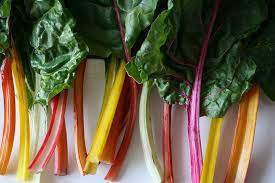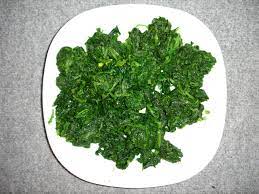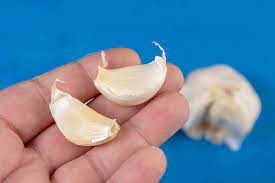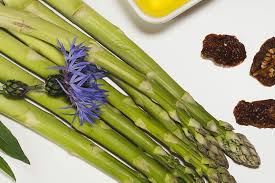Should You Eat the Rainbow Diet?
Eat the rainbow, say, health experts, to emphasise the importance of eating a variety of fruits and vegetables.
You probably know that eating colourful fruits and vegetables is good for your health, but why is it so?
This article discusses the benefits and how to eat the rainbow.
The Rainbow Diet’s Advantages
Eating the rainbow simply means eating a variety of fruits and vegetables daily.
Phytonutrient pigments give colour to plants.
Coloured plants have more nutrients and health benefits. 
Snacking on colourful foods will increase your intake of various nutrients, which will benefit your entire body.
Despite their many claimed benefits, phytonutrients are difficult to test in randomised controlled trials.
As a result, most studies focus on population intake and diseases.
The benefits of eating colourful fruits and vegetables are almost universally positive.
The vitamins, minerals, and phytochemicals your body needs are provided by eating a wide range of colours.
Here are the health benefits of various foods.
SUMMARY
Eat a rainbow of fruits and vegetables throughout the day to reap the benefits of eating the rainbow.
The anti-inflammatory and antioxidant properties of most fruits and vegetables may benefit your health in various ways.
A phytochemical and nutrient profile for each colour.
Dietary phytonutrients (plant-based nutrients) are phytonutrients that are rich in antioxidants.
Varies depending on the vegetable or fruit, vitamins and minerals.
Red
- pink guava
- watermelon
- lycopene (from the vitamin A family)

- A (lycopene)
- Vitamin C
- Vitamine K1
- Vitamine A (lycopene)
Effects on
anti-inflammatory
antioxidant
Reducing your risk of certain cancers may benefit your heart health.
Yellow and Orange
- WestEnd/Getty Images
- Fruits and veg
- carotenoids (beta, alpha, beta-cryptoxanthin) (vitamin A family)
- A (beta carotene) Vitamin C
Effects on
This product contains anti-inflammatory, antioxidant, and anti-cancer properties.
Green
- spinach
- kale
- broccoli
- avocados

- asparagus
- green cabbage
- Brussels sprouts
Foliage: chlorophyll and carotenoids; cruciferous: indoles, isothiocyanates, glucosinolates; legumes: phytates
A (beta carotene)
Effects on
Consumption of cruciferous vegetables may help prevent cancer and heart disease.
Blueberries, red/purple cabbage, eggplant, plums, elderberries, blueberries
Anthocyanins are a phytonutrient.
B6, C, and K1 are the main vitamins and minerals.
Effects on
• anti-inflammatory
• antioxidant crimson
Prickly Pears and Beets
- trains
- folate

- magnesium
- manganese
- potassium
Effects on
Increased oxygen uptake may support athletic performance by reducing the risk of high blood pressure and heart disease.
WHITE BROWN
cauliflower, garlic, onions, mushrooms, daikon radish, parsnips, and white potatoes are all vegetables.
Flavonoids (flavones) and allicin are the main phytonutrients.
- fibre
- folate • magnesium
- manganese
- potassium
- vitamin B6
- anti-inflammatory
- antioxidant
Resume
Each colour represents a unique phytochemical and nutrient combination.
How-to
Eating the rainbow is quick and straightforward.
Every meal and snack should contain at least two to three colours of fruits or vegetables.
Try to eat a variety of colours every week.
Some suggestions:
Breakfast egg sandwich with tomato, leafy greens, and avocado
• chicken with roasted sweet potatoes, Brussels sprouts, and garlic
• homemade soup with canned tomatoes, onion, garlic, chopped carrots, white potatoes or parsnips, and kale
Green smoothies or juices, apples with peanut butter, red pepper slices with hummus, grapes and cheese
Edamame pods, celery, melted cheese, dried mango slices
Fruits and vegetables are easy to include in your diet.
If you can’t get fresh produce all year, try frozen fruits and veggies.
They’re both healthy, accessible, and affordable.
Every meal and snack should include two to three different-coloured fruits or vegetables.
In short
Eat the rainbow every day to ensure you get a diverse range of nutrients.
Coloured fruits and veggies have various health benefits.
Every meal should include a variety of colourful fruits and vegetables.
If you want to eat the rainbow, include two or three different coloured fruits or vegetables in each meal and snack.
Foods That Are Good For You
We all know how healthy vegetables are.
Vitamins, minerals, and fibre make up the bulk of most vegetables.
Vegetables that can fight inflammation or reduce disease risk are known to be superior to other vegetables.
Why should you eat these healthy vegetables?
Spinach
Thanks to its impressive nutrient profile, this leafy green is one of the healthiest vegetables.
66% of your daily vitamin A needs are met by 1 cup (30 grammes) of raw spinach, at only 7 calories per cup.
In addition, spinach is high in antioxidants, which can help prevent chronic diseases. 
One study found antioxidants linked to a lower risk of cancer in dark green leafy vegetables like spinach.
The consumption of spinach may also benefit the heart by lowering blood pressure, according to research published in 2015.
SUMMARY:
Spinach is high in antioxidants, which may help reduce chronic disease risk factors like high blood pressure and heart disease.
Carrots
One cup of carrots contains 428 per cent of the daily recommended vitamin A. (128 grams).
Cauliflowers are high in beta-carotene, an antioxidant that helps prevent cancer.
According to one study, one study reduced prostate cancer risk by 5% for every serving of carrots consumed weekly.
Eating carrots may also help smokers avoid lung cancer.
Smokers who did not eat carrots had a threefold increased risk of developing lung cancer than those who ate carrots weekly.
Carrots are high in vitamin C, potassium, and vitamin K2.
Vitamin A is produced in the body by beta-carotene in carrots.
Their antioxidant content may help reduce lung and prostate cancer risk.
Brussel Sprouts
The cruciferous vegetable family includes broccoli.
In it, you’ll find glucosinolates, a sulphur-containing plant compound, and sulforaphane, glucosinolates’ by-product.
Cancer-fighting properties of sulforaphane have been demonstrated.
Breast cancer cells were smaller and number in one study on mice that used sulforaphane.
Aside from cancer, broccoli may help prevent other chronic diseases.
Eating broccoli sprouts reduced the number of oxidants, protecting the heart from disease-causing oxidative stress.
Broccoli is full of nutrients and can help prevent disease.
- Vitamin K
- Vitamin C
- Folate
- Manganese
- Potassium is abundant in raw broccoli.
In broccoli, a cruciferous vegetable, there is an antioxidant called sulforaphane.
By protecting against oxidative stress, broccoli may help prevent chronic disease.
Garlic
In ancient China and Egypt, garlic was used medicinally.
Garlic’s main active compound is allicin, which has many health benefits, including immunity.
Garlic has been shown to lower blood sugar and improve heart health in several studies.
The garlic component dally trisulfide was given to diabetic rats in one study.
It lowered blood sugar and improved insulin sensitivity.
The garlic in another study was given to both healthy and sick people.
Garlic reduced total and LDL cholesterol while increasing HDL cholesterol in both groups.
Garlic may also help fight cancer.
Allicin caused cell death in human liver cancer cells in a test tube, researchers found.
But more research is required to fully grasp garlic’s anti-cancer properties.
Garlic may help lower blood triglycerides, according to research.
However, more research is required.
Brussels Sprouts
Brussels sprouts, like broccoli, are cruciferous vegetables and contain health-promoting phytochemicals.
Brussels sprouts contain kaempferol, an antioxidant that may help protect cells.
Unstable free radicals cause oxidative cell damage and contribute to chronic disease.
Dietary intake of Brussels sprouts can also aid in detoxification
This could reduce the risk of colorectal cancer.
Brussels sprouts are also loaded with nutrients.
Each serving contains plenty of
- vitamin K, A, C,
- folate,
- manganese,
- potassium,
- folate.
Eating Brussels sprouts may help prevent chronic disease by protecting cells from oxidative stress.
They may also aid in the body’s detoxication.
Kale
In addition to its nutrient density and antioxidant content, kale is a well-known health-promoting vegetable.
B vitamins, potassium, calcium, and copper are abundant in a cup (67 grammes) of raw kale.
And it’s got all your A, C, and K needs.
Kale’s high antioxidant content may also help promote cardiovascular health. 
32 hypercholesterolemic men drank kale juice daily in 2008.
Overall, HDL cholesterol rose 27%, LDL fell 10%, and antioxidant activity rose 10%.
Another study found that kale juice can help lower blood pressure, cholesterol, and glucose levels.
Kale is loaded with antioxidants and vitamins A, C, and K.
In some studies, kale juice lowers blood pressure and LDL cholesterol while raising HDL cholesterol.
Green Beans
Peas are starchy. Consumption of large amounts of starchy vegetables may cause blood sugar spikes.
Densely nutritive, green peas are a
- 9 g fibre,
- 9 g protein,
- vitamins A, C,
- and K,
- riboflavin,
- thiamine,
- niacin, and
- folate per cup (160 g)
- cooked green peas
Peas are high in fibre and promote regular bowel movements, which helps digestion.
The anti-cancer properties of peas are attributed to saponins, a plant compound.
Saponins may help fight cancer by slowing tumour growth and killing cancer cells, according to research.
SUMMARY:
Green peas are high in fibre, which is good for your gut.
They also contain saponins, a plant compound that may be anti-tumour.
Chard, Swiss
Swiss chard is low calorie but high in vitamins and minerals.
6 g protein, 1 g fibre, vitamins A, C & K, manganese & magnesium in one cup (36 g).
Swiss chard is renowned for its ability to protect against diabetes-related complications.
It reduced blood sugar levels and protected cells from disease-causing free radicals in one study on rats.
The antioxidant content of chard extract has also been shown to protect the liver and kidneys from diabetes.
I hope you enjoyed my Blog, Please leave comments and questions below and I will be glad to answer them.




